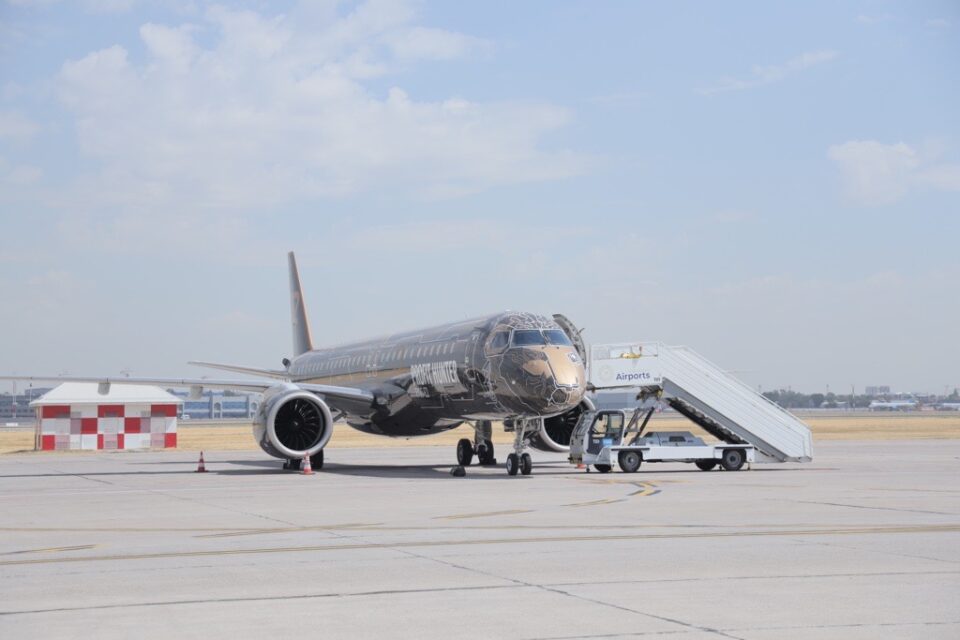Aerospace
Embraer deliveries increase by 30% to 43 aircraft in 3Q23

Embraer, a leading aerospace company headquartered in São José dos Campos, Brazil, reported significant growth in its aircraft deliveries for the third quarter of 2023. During this period, they delivered 43 jets, marking a notable 30% increase compared to the same quarter in 2022, when 33 aircraft were handed over to customers.
The growth in deliveries was particularly remarkable in the Commercial Aviation sector, with a 50% increase from 10 to 15 aircraft compared to the third quarter of 2022. Meanwhile, the Executive Aviation sector also experienced a boost, with a total of 28 jets delivered (comprising 19 light and 9 medium jets), reflecting a 22% increase from the previous year’s third quarter.
In total, for the year 2023 up to the end of the third quarter, Embraer successfully delivered 105 aircraft. This figure included 39 commercial aircraft and 66 executive jets, representing a substantial 33% increase compared to the same period in 2022, when a total of 79 jets (consisting of 27 commercial aircraft and 52 executive jets) were delivered.

It’s noteworthy that this marks the second consecutive quarter in which Embraer achieved double-digit delivery growth, with the previous quarter showing a remarkable 47% increase in deliveries compared to the corresponding period in 2022.
Embraer E2 175/E195 orders 2023
The Commercial Aviation backlog for Embraer saw growth, increasing from US$ 8 billion to US$ 8.6 billion compared to the second quarter of 2023. This expansion in backlog was driven by the sale of 42 aircraft by the end of September.
SkyWest, a prominent player in the aviation industry, placed an order for 19 new E175 jets to expand its operations within the United Airlines network. This order complements the 90 E175 jets that SkyWest already operates in conjunction with the airline. These 70-seat aircraft will be configured in a three-class layout. Notably, this transaction is included in the third-quarter backlog, and deliveries are scheduled to commence in the fourth quarter of 2024.
In another significant development during this quarter, Luxair, an airline based in Luxembourg, placed an order for four E195-E2s, which also includes two purchase options and three purchase rights for additional E2 jets. Additionally, Luxair has the flexibility to exercise conversion rights for the E190-E2 if needed. The first E195-E2 delivery is slated for the fourth quarter of 2025.
Executive Aviation’s strong backlog at US$ 4.3 billion, with a of book to bill 1.5:1, highlights the high volume of jet sales and deliveries. The business unit continues its sales momentum with sustained demand across its entire product portfolio and strong customer acceptance in both retail and fleet markets. At NBAA, Embraer announced the Phenom 100EX, the company’s newest evolution delivers superior cabin comfort, operational versatility and safety-enhanced pilot-centric avionics to offer the ultimate flying experience.
In addition, the autothrottle feature was announced for the Phenom 300E. In August, the Phenom 300 series became the most-flown business jet in the United States and the family surpassed 2 million flight hours.

Aerospace
Boeing Transfers Rocket Stage to NASA, Paving Way for Human Moon Mission

Boeing has achieved a significant milestone by providing NASA with the second core stage of the Space Launch System (SLS) rocket.
This crucial component, crafted at NASA’s Michoud Assembly Facility (MAF), is set to propel the Artemis II crew into lunar orbit, marking humanity’s return to deep space after a 50-year hiatus.
The monumental Boeing-built rocket stage, the largest element of the Artemis II mission, will embark on a journey aboard the Pegasus barge, traveling 900 miles to NASA’s Kennedy Space Center.
Comparison of two legendary aircraft B777x vs B747 aircraft:Click here
Upon arrival, it will be meticulously integrated with other essential Artemis II components, including the upper stage, solid rocket boosters, and NASA’s Orion spacecraft within the iconic Vehicle Assembly Building. This intricate integration process is a vital step toward the eagerly anticipated Artemis II launch, slated for 2025.
“Boeing-built products helped land humankind on the moon in 1969, and we’re proud to continue that legacy through the Artemis generation,” remarked Dave Dutcher, vice president and program manager for Boeing’s SLS program. “Together, with NASA and our industry partners and suppliers, we are building the world’s most capable rocket and paving the way to deep space through America’s rocket factory in New Orleans.”
NASA, Lockheed Martin Reveal X-59 Quiet Supersonic Aircraft:Click here
The delivery of Core Stage 2 marks a significant achievement in the evolution of the SLS rocket. Towering over 200 feet and powered by four RS-25 engines, this core stage, coupled with two solid-fueled booster rockets, will generate a staggering 8.8 million pounds of thrust. This immense power is crucial to launching Artemis II and future missions into the vast expanse of space.
The SLS rocket stands unparalleled in its capability to transport both crew and substantial cargo to the moon and beyond in a single launch. Its extraordinary capacity will facilitate the delivery of human-rated spacecraft, habitats, and scientific missions to destinations including the moon and Mars, ushering in a new era of space exploration.
-

 Travel1 week ago
Travel1 week agoAir India to Expand US Operations with Three New Routes After a Decade
-

 Travel2 weeks ago
Travel2 weeks agoWhy We Should Avoid These Stamps in a Passport
-

 Airlines1 month ago
Airlines1 month agoInvestigations Reveal Fake Chinese Titanium in Boeing and Airbus Jets
-

 Tech4 weeks ago
Tech4 weeks agoChina’s CATL Plans 1,800-Mile Electric Plane Launch by 2027
-

 Airport3 days ago
Airport3 days agoTop 10 Largest Airports in the World by Size
-

 Aerospace4 weeks ago
Aerospace4 weeks agoChina’s Fighter Jets Turn Wings into Autonomous Drones
-

 Airlines4 days ago
Airlines4 days agoAir India Rolls Out A350s for Delhi-New York JFK and Newark Routes
-

 Defence3 weeks ago
Defence3 weeks agoBoeing Enhances Chinook with New Engines and Block II Upgrades at $96 Million







